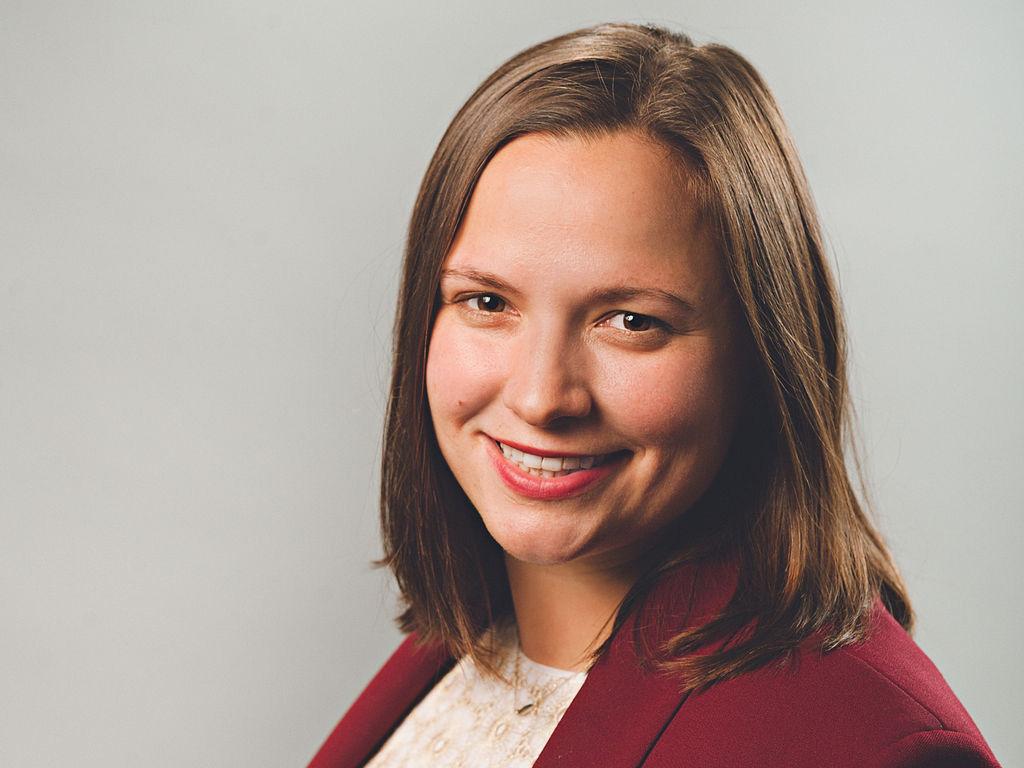Catalina Iannone of SUNY Oswego’s modern languages and literatures recently earned a national award for her journal publication, "Visualizing Blackness in Contemporary Spain: Race and Representation in Juan Valbuena’s 'Salitre.'"
The editors of Hispania, a peer-reviewed academic journal and the official journal of the American Association of Teachers of Spanish and Portuguese (AATSP) holds an annual Outstanding Scholarly Publication Award, evaluating articles published in the previous two years. One winner and one honorable mention rise from those top-notch submissions -- with Iannone’s article emerging in the latter runner-up position.
"Visualizing Blackness in Contemporary Spain” appeared in the September 2020 volume of Hispania, analyzing “Salitre,” Spanish photographer Juan Valbuena’s collection of photographs and texts.
“From 2009 to 2014 Valbuena worked with a group of Senegalese immigrants who lived together in an overcrowded apartment known as a piso patera in Madrid’s Lavapiés neighborhood to create a multi-volume photographic archive of their lives,” Iannone explained.
The black and undocumented Senegalese men who live in the apartments created 12 volumes in the work.
“Yet, their books are unified, organized and explained by Valbuena’s contribution, that of a white Spanish citizen, which frames the migrant experience in difference to and displaced within Spanish society,” Iannone said. “Because of this, my article focuses on distinctions between Valbuena's and the men's texts, and considers the impact of Valbuena’s subjectivity in organizing different visions of Afro-diasporic experiences in contemporary Madrid.”
In doing so, Iannone considered Saidiya Hartman’s question from “Venus in Two Acts”: “How does one revisit the scene of subjection without replicating the grammar of violence?”
“This issue is clear in ‘Salitre,’ where there is a stark juxtaposition between the contents of Valbuena’s volume, which reproduce a narrative of blackness as spectacle through a white gaze, and the men’s interventions, which challenge iconic representations of blackness in Spain,” Iannone said.
Teaching experiences
Iannone began teaching Spanish classes in Oswego’s department of modern languages and literatures in fall 2020. While a unique time to start teaching at Oswego, Iannone is already “impressed by the students' willingness to experiment and take risks with new topics and technologies” even in an era of remote teaching.
“For example, this semester I have been teaching a seminar called ‘Transatlantic Trash and Culture: Waste in the Spanish-Speaking World’ in which we are tackling big questions regarding the creation and cultivation of waste,” Iannone said. “My students are actively engaging with cutting-edge research related to ecocriticism and discard studies, and in Spanish to boot!”
The class takes advantage of a visual networking platform called Scalar they access through SUNY-Create. “With this multi-modal digital publishing tool, students are working together to create a glossary of terms, texts and audiovisual materials related to the study of waste as a cultural concept,” Iannone said. “I'm impressed by the students' passion for the subject and engagement with these activities.”
Working with a wide variety of students, and seeing them grow their skills, has been gratifying as well.
“One of my favorite things as a language instructor is to see students become more confident in their communicative abilities over their course of study,” Iannone said. “Our students run the gamut of background and ability, from heritage speakers who have learned the language informally during their upbringing, to true beginners who have never taken a day of the language in their lives.”
Teaching this range of language learners is “an exciting challenge,” Iannone notes.
“Since I teach across the curriculum, ranging from the very first Spanish 101 course to advanced topics seminars based on literary and cultural studies, I get to see our students grow exponentially as they progress through the major or minor,” Iannone said. “I'm eager for our students to go abroad again because with that type of linguistic and cultural immersion some of the most impressive progress takes place!”




